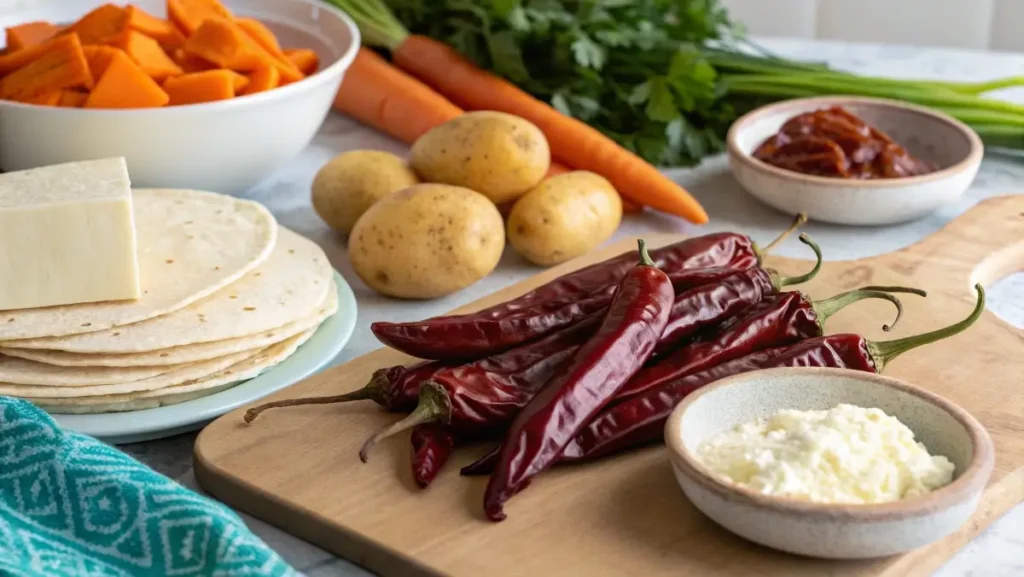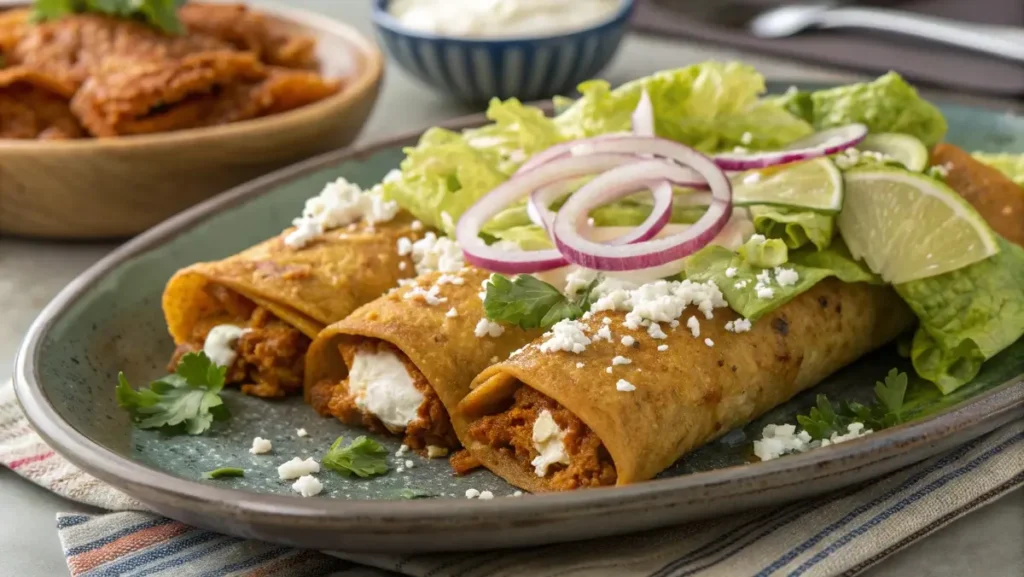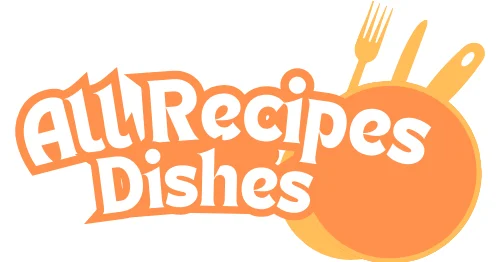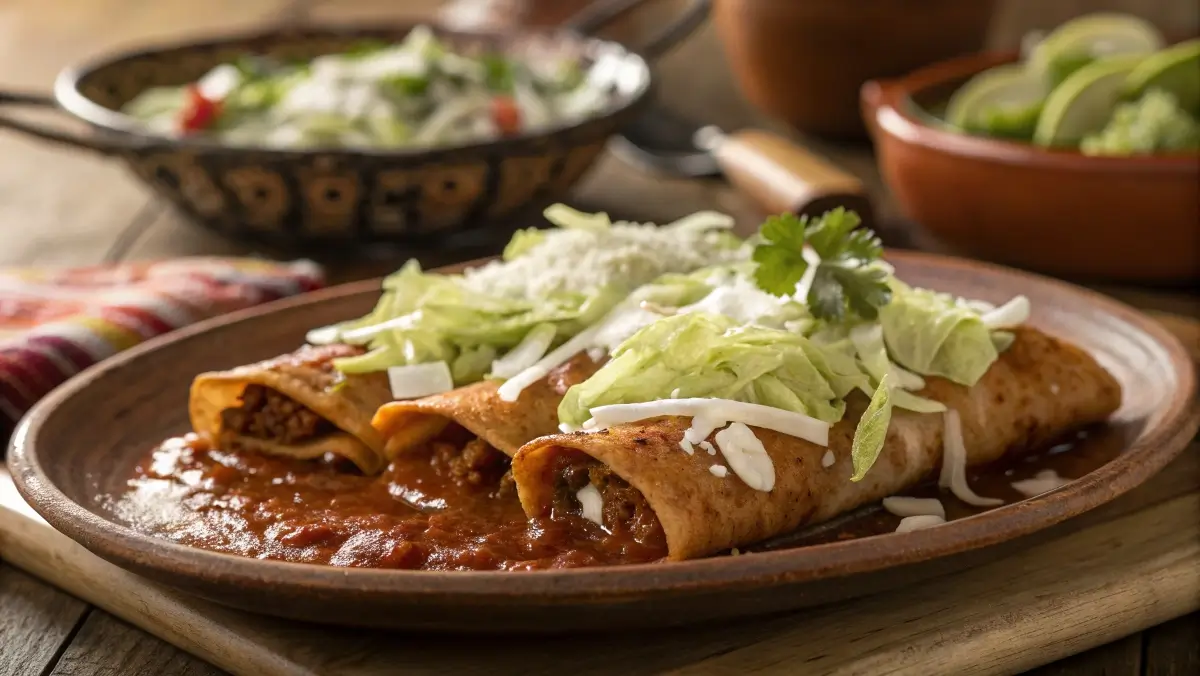Enchiladas Michoacanas: The Ultimate Traditional Mexican Recipe Guide
If you’re craving bold, authentic Mexican flavor, enchiladas michoacanas should be at the top of your must-try list. Originating from the state of Michoacán, this beloved dish combines hearty corn tortillas, rich red chili sauce, and a medley of vegetables or meat fillings that truly capture the essence of Mexican home cooking. Unlike Tex-Mex variations, enchiladas michoacanas focus on earthy, rustic ingredients and time-honored cooking techniques passed down through generations.
In this guide, we’ll walk you through everything you need to know—from what makes enchiladas michoacanas unique, to how to cook them from scratch at home, and how to adapt them to your dietary needs. Plus, you’ll get nutritional tips, gluten-free alternatives, and answers to popular questions like “Are enchiladas healthy?” or “What’s the difference between enchiladas estilo Michoacán and enchiladas queretanas?”
Looking for inspiration? Try our Sour Cream Enchilada Sauce Recipe to pair with your homemade enchiladas.
Table of Contents
What Are Enchiladas Michoacanas? A Traditional Mexican Delight
The Origins of Enchiladas Michoacanas in Michoacán
Enchiladas Michoacanas are a traditional dish from Michoacán, a culturally rich region located in western Mexico. The dish has indigenous Purépecha roots and reflects the region’s preference for using fresh corn masa, dried chili peppers, and local produce. Unlike commercialized enchiladas, these are rustic, earthy, and deeply flavorful.
The star of the dish is the chile rojo sauce—made from dried guajillo or ancho chilies—giving the enchiladas their vibrant red color and smoky depth. In Michoacán households, this sauce is often made in a stone grinder or molcajete for a richer texture.
What sets this dish apart is its simplicity. Instead of being smothered in cheese or sour cream, enchiladas michoacanas are often filled with potatoes, carrots, and sometimes shredded meat, then pan-fried and topped with crumbled queso fresco, lettuce, and salsa.
These enchiladas are more than just food—they’re a symbol of family gatherings, fiestas, and Michoacán’s strong culinary heritage.
Cultural Significance and Local Ingredients Used
In Michoacán, enchiladas are often served at family events, religious festivals, and community fairs. This dish represents more than flavor—it embodies identity, pride, and the simplicity of rural cooking. It’s typically served with:
- Boiled carrots and diced potatoes (a hallmark filling)
- Corn tortillas dipped in red chili sauce before cooking
- Queso fresco or ranchero cheese
- Fresh shredded cabbage or lettuce
- Mexican crema or salsa verde (optional)
Everything is assembled with love, usually on a well-worn comal or skillet passed down through generations.
Don’t miss our Delicious Mexican Cornbread Casserole—a perfect side to complement these enchiladas.
Enchiladas Michoacanas vs Regular Enchiladas – What Sets Them Apart?
Sauce, Filling, and Preparation Differences Explained
While “enchiladas” is a broad term across Mexico, enchiladas michoacanas stand out because of their preparation style and ingredient profile. In most Mexican regions, enchiladas are tortillas rolled around a filling, then smothered in sauce. In Michoacán, the process begins differently—corn tortillas are dipped into freshly made red chili sauce before they’re cooked, not after.
This pre-cooking dip infuses the tortilla with a deep, smoky flavor right from the start. The sauce is usually made from guajillo chiles, garlic, and spices, creating a vibrant red coating that’s less creamy and more earthy than the sauces in Tex-Mex enchiladas.
As for fillings, you won’t always find the heavy cheese-and-meat combination common in U.S. versions. Instead, fillings often include boiled potatoes, carrots, and sometimes shredded chicken. Cheese, if used, is typically queso fresco—light, crumbly, and fresh-tasting.
Another difference lies in cooking technique. Michoacán-style enchiladas are lightly pan-fried after being filled, which crisps the tortilla edges while keeping the inside soft and flavorful. This texture contrast is part of their charm.
Texture, Spice Level, and Serving Style Comparison
If you bite into a plate of enchiladas michoacanas, you’ll notice the rustic texture immediately. The tortillas have a slight chew, with crispy edges from the skillet. The spice level leans moderate, but it depends on the number and type of chiles used. Guajillos bring a mild heat and rich smokiness, while adding a few arbol chiles can crank up the fire for spice lovers.
Regular enchiladas—especially Tex-Mex style—are often baked and swimming in sauce, with melted cheese sealing everything together. Michoacanas, on the other hand, are assembled and plated individually, then topped with fresh garnishes like shredded cabbage, onions, or salsa.
This difference in plating not only changes the flavor experience but also makes the dish lighter and fresher. Instead of being drenched, each bite offers a balance between tortilla, filling, and toppings.
Discover great ideas like our Mexican Vegetarian Cheese Jiffy Corn Bread Casserole to serve alongside your enchiladas.
How to Make Authentic Enchiladas Michoacanas at Home

Traditional Ingredients List (With Substitutes)
Making authentic enchiladas michoacanas at home starts with fresh, simple ingredients. While the base recipe uses traditional Mexican staples, you can make a few swaps if certain items aren’t available.
| Ingredient | Quantity | Traditional Use | Substitute Option |
|---|---|---|---|
| Corn tortillas | 12 small | Base of the enchiladas | Gluten-free or store-bought corn tortillas |
| Guajillo chiles (dried) | 8–10 | Main sauce flavor | Ancho chiles for milder flavor |
| Garlic cloves | 3–4 | Adds depth to sauce | Garlic powder (½ tsp) |
| White onion | ½ medium | Sauce & garnish | Yellow onion |
| Carrots | 2 medium | Filling | Zucchini for variation |
| Potatoes | 2 medium | Filling | Sweet potatoes |
| Queso fresco | 1 cup crumbled | Garnish | Feta cheese |
| Lettuce or cabbage | 1 cup shredded | Topping | Spinach leaves |
| Vegetable oil | ½ cup | Frying | Olive oil |
| Salt | To taste | Balances flavors | Sea salt or kosher salt |
Step-by-Step Cooking Instructions (With Preparation Time and Tools)
Prep Time: 25 minutes
Cook Time: 20 minutes
Total Time: 45 minutes
Servings: 4
- Prepare the Sauce
- Remove stems and seeds from guajillo chiles.
- Boil them for 5–7 minutes until softened.
- Blend with garlic, onion, a pinch of salt, and 1 cup of the cooking water until smooth.
- Cook the Vegetables
- Dice the potatoes and carrots into small cubes.
- Boil in salted water until just tender, about 8–10 minutes. Drain.
- Dip and Fry the Tortillas
- Heat oil in a skillet over medium heat.
- Dip each tortilla into the chili sauce, coating both sides.
- Lightly fry for 30 seconds per side until pliable but not crispy.
- Assemble the Enchiladas
- Place a small amount of potato-carrot filling in each tortilla.
- Roll and plate immediately.
- Top and Serve
- Garnish with queso fresco, shredded lettuce, and onion slices.
- Optional: drizzle with Mexican crema or salsa verde.
Pro Tip: Always dip tortillas in sauce before frying to lock in flavor—the signature Michoacán touch.
Check out our Mexican Street Corn Dip for a perfect party side dish.
Regional Variations – Enchiladas Estilo Michoacán & More
Enchiladas Estilo Michoacán: The Core Style
When people say “enchiladas estilo Michoacán,” they’re usually talking about the classic version made in the state’s rural towns. This style stays true to its roots—corn tortillas dipped in guajillo chili sauce, lightly fried, and filled with boiled potatoes and carrots, sometimes accompanied by a piece of fried chicken on the side.
What’s unique here is the balance of spice and freshness. The chile sauce is bold but not overpowering, and the toppings—shredded lettuce, crumbled queso fresco, and raw onion—add a crisp, cooling contrast.
In some areas of Michoacán, the tortillas are made from blue corn masa, which adds a deeper, nuttier flavor and striking visual appeal.
Enchiladas Queretanas: A Neighboring Cousin
Travel just a few hours east to Querétaro, and you’ll find enchiladas queretanas—a related but distinct dish. Here’s how they differ:
- Sauce: Querétaro’s version often uses a slightly spicier red chile blend, sometimes with added tomatoes for sweetness.
- Filling: While Michoacán’s version leans heavily on vegetables, queretanas tend to include shredded chicken or cheese as the main filling.
- Side Dishes: Enchiladas queretanas are frequently served with refried beans and pickled jalapeños.
- Texture: Querétaro’s style may be softer overall, as the tortillas aren’t pan-fried as long.
Both are delicious, but Michoacán’s version is more rustic and relies less on cheese and meat, making it lighter and more vegetable-forward.
Don’t miss our Is Cornmeal Flour Gluten-Free? guide if you want to explore gluten-free adaptations for these enchiladas.
Gluten-Free and Dietary-Friendly Adaptations for Enchiladas Michoacanas
Making Enchiladas Michoacanas Gluten-Free
The great news? Authentic enchiladas michoacanas are naturally gluten-free—if you stick to traditional corn tortillas and avoid flour-based sauces. Since the dish relies on corn masa for tortillas and fresh chiles for sauce, there’s no wheat involved.
However, store-bought tortillas can sometimes contain hidden gluten from preservatives or cross-contamination. To be safe:
- Look for packaging labeled “certified gluten-free”.
- Or make your own tortillas at home with masa harina (gluten-free corn flour).
When frying, use fresh oil to avoid gluten contamination if it’s shared in a kitchen with breaded foods.
Healthy and Lighter Ingredient Swaps
If you want a healthier take on enchiladas michoacanas, try these swaps without losing authenticity:
- Oil Reduction: Instead of frying tortillas, lightly pan-sear with cooking spray or brush with minimal oil.
- Protein Boost: Add shredded chicken or turkey breast for lean protein.
- Veggie Boost: Increase carrot and potato filling, or add zucchini, mushrooms, or spinach.
- Dairy-Free: Use vegan cheese crumbles instead of queso fresco.
- Low-Sodium: Make sauce from scratch and control the salt level.
Are Chicken Enchiladas Gluten-Free?
Yes, chicken enchiladas can be gluten-free—but only if you use corn tortillas and avoid flour in your sauce or thickeners. Be wary of restaurant versions, as many use flour tortillas or thicken the sauce with wheat flour.
Looking for inspiration? Try our Gluten-Free Summer Salads as a fresh side dish for your enchiladas.
Are Enchiladas Michoacanas Healthy? Nutritional Insights and Tips

Nutritional Breakdown of Traditional Enchiladas Michoacanas
Enchiladas michoacanas can be a wholesome meal, depending on preparation. A typical serving (3 enchiladas with potato-carrot filling, queso fresco, and toppings) contains:
| Nutrient | Approximate Amount | Notes |
|---|---|---|
| Calories | 380–420 kcal | Based on frying in moderate oil |
| Protein | 9–12 g | Increases with chicken or turkey |
| Carbohydrates | 55–60 g | Mostly from corn tortillas and potatoes |
| Fat | 12–15 g | Primarily from frying oil and cheese |
| Fiber | 6–8 g | From vegetables and corn tortillas |
| Sodium | 400–550 mg | Depends on cheese and added salt |
This balance makes them rich in complex carbs and fiber, with moderate protein. The frying oil adds fat, which you can adjust based on dietary needs.
How to Make Them Healthier Without Losing Flavor
- Reduce Frying Oil – Use just enough to coat tortillas or bake them lightly after dipping in sauce.
- Boost Protein – Add grilled chicken, turkey, or beans to the filling.
- Increase Veggies – Add zucchini, mushrooms, or spinach to the potato-carrot mix.
- Lower Sodium – Use homemade sauce and fresh queso fresco to control salt levels.
- Go Dairy-Free – Use plant-based cheese for a vegan option.
By focusing on fresh, whole ingredients, enchiladas michoacanas can be part of a balanced diet. They’re especially satisfying because they combine protein, fiber, and slow-digesting carbs, keeping you full longer.
Serving Suggestions and Perfect Pairings for Enchiladas Michoacanas
Traditional Mexican Pairings
In Michoacán, enchiladas michoacanas aren’t just a standalone plate—they’re part of a full, vibrant meal. Common pairings include:
- Fried Chicken (Pollo Frito) – Served alongside or on top of the enchiladas for added protein.
- Frijoles Refritos (Refried Beans) – Creamy beans balance the spice of the enchiladas.
- Arroz Rojo (Mexican Red Rice) – Tomato-based rice simmered with garlic and onions.
- Pickled Jalapeños & Carrots – Tangy, spicy vegetables add brightness.
Modern and Creative Serving Ideas
If you’re serving enchiladas michoacanas for a dinner party or modern table:
- Mini Enchilada Bites – Use small tortillas for appetizer-sized portions.
- Family-Style Platters – Arrange the enchiladas neatly on a large tray, with toppings served separately in bowls.
- Salad Pairing – Serve with a crisp avocado and citrus salad for freshness.
- Soup Starter – Begin with a light tortilla soup before the main dish.
Drinks That Complement the Flavors
To round out the meal, pair enchiladas with:
- Agua Fresca de Jamaica (Hibiscus Tea) – Tart and refreshing.
- Horchata – Sweet cinnamon rice drink.
- Micheladas – Spicy beer cocktails with lime and chili powder.
- Sparkling Water with Lime – Keeps the palate fresh between bites.
Common Mistakes to Avoid When Making Enchiladas Michoacanas
Over-Frying the Tortillas
One of the easiest mistakes is frying tortillas too long after dipping them in chile sauce. This can make them tough, greasy, and overly crunchy. The goal is a light sear—just enough to set the sauce and give the tortilla some flexibility.
Using the Wrong Chiles
The heart of enchiladas michoacanas is the guajillo chile. Substituting with overly spicy or smoky chiles changes the character of the dish.
- Guajillo = Mild heat + tangy depth
- Avoid replacing it with chipotle or arbol unless you want a spicier twist.
Skipping Fresh Garnishes
Some home cooks skip lettuce, onions, or queso fresco, thinking they’re just extras. In reality, these fresh toppings balance the chile sauce’s earthiness and make the dish pop with texture.
Overstuffing the Tortillas
While it’s tempting to pack in as much filling as possible, overstuffing makes rolling difficult and can cause tortillas to tear. Keep it modest—about 2 to 3 tablespoons of filling is perfect.
Not Balancing the Meal
Enchiladas michoacanas shine when served with complementary sides like beans, rice, or a light salad. Serving them alone can make the meal feel heavy and incomplete.
Check out our Sour Cream Enchilada Sauce Recipe if you want a creamy twist to serve on the side.
Step-by-Step Authentic Enchiladas Michoacanas Recipe

Ingredients (Serves 4)
For the Sauce:
- 8 dried guajillo chiles, seeds and stems removed
- 2 cloves garlic
- ½ teaspoon cumin seeds
- 1 teaspoon salt (or to taste)
- 1½ cups hot water (for soaking chiles)
For the Enchiladas:
- 12 corn tortillas (preferably fresh, made from masa harina)
- 2 medium potatoes, peeled and cubed
- 2 medium carrots, peeled and diced
- 1 cup queso fresco, crumbled
- ½ head lettuce, finely shredded
- ½ white onion, thinly sliced
- ½ cup vegetable oil (for frying)
Optional Side Protein:
- 4 pieces fried chicken thighs or legs
Step 1: Prepare the Filling
- Boil potatoes and carrots in salted water until tender (about 10–12 minutes).
- Drain well and set aside.
Step 2: Make the Guajillo Sauce
- Soak guajillo chiles in hot water for 15 minutes until softened.
- Blend chiles, garlic, cumin, and salt with about 1 cup of soaking liquid until smooth.
- Strain sauce through a fine sieve for a silky texture.
Step 3: Assemble the Enchiladas
- Heat oil in a skillet over medium heat.
- Dip each tortilla in the guajillo sauce, then lightly fry for 10–15 seconds per side—just enough to make them pliable.
- Fill each tortilla with 2–3 tablespoons of the potato-carrot mix, roll up, and place on a serving plate.
Step 4: Garnish and Serve
- Top enchiladas with shredded lettuce, onion slices, and queso fresco.
- Serve hot, optionally paired with crispy fried chicken.
Pro Tip:
If you want a milder flavor, remove the seeds from the guajillo chiles before soaking. For more heat, blend in one chile de árbol.
Conclusion
Enchiladas michoacanas are more than just a dish—they’re a tribute to the rich culinary traditions of Michoacán. With their vibrant guajillo chile sauce, hearty potato-carrot filling, and fresh toppings, they strike a perfect balance of comfort and flavor. By mastering the traditional steps, avoiding common mistakes, and adapting to dietary needs, you can bring a taste of Mexico’s heartland to your table.
From street vendors in Pátzcuaro to your own kitchen, these enchiladas prove that authentic flavor doesn’t require complicated techniques—just fresh ingredients, a little patience, and a love for sharing food.
FAQs
What is enchilada michoacanas vs enchiladas?
Enchiladas michoacanas are a regional variation from Michoacán, Mexico, known for their guajillo chile sauce, potato-carrot filling, and fresh garnishes like lettuce, onion, and queso fresco. Standard enchiladas vary by region and may use different sauces, meats, or baking methods.
What are enchiladas estilo Michoacán?
“Enchiladas estilo Michoacán” refers to the authentic Michoacán-style enchiladas, prepared with guajillo chile sauce, filled with vegetables (and sometimes chicken), and served with fried chicken and sides like beans or rice.
What are enchiladas queretanas?
Enchiladas queretanas are from Querétaro, Mexico. They’re usually smaller, filled with cheese or chicken, dipped in guajillo sauce, and topped with fresh garnishes—similar to Michoacán style but with subtle spice and texture differences.
Are chicken enchiladas gluten-free?
Yes, chicken enchiladas can be gluten-free if made with corn tortillas and gluten-free sauces. Always check for cross-contamination when eating out.
Are enchiladas healthy?
Enchiladas can be part of a healthy diet, especially if baked instead of fried, filled with vegetables, lean proteins, and paired with fresh sides.
Is Chick-fil-A gluten-free chicken?
Chick-fil-A offers grilled chicken items that are gluten-free, but their breaded chicken contains gluten. Cross-contamination may occur in shared kitchens.

